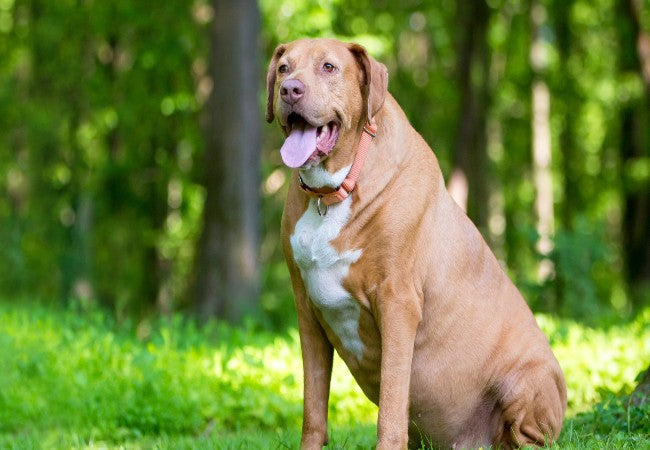Top Exercise Warning Signs in Dogs: 2025 Vet Reviewed Guide 🐾

In this article
Top Exercise Warning Signs in Dogs: 2025 Vet-Reviewed Guide 🐾
By Dr. Duncan Houston BVSc
Exercise is vital for a dog’s physical and emotional health. When dogs don’t get enough activity, they often show clear warning signals. Below is an in-depth, vet-reviewed exploration of under-exercise signs and practical solutions to keep your pup healthy, happy, and well-balanced.
1. ⚖️ Weight Gain & Obesity
One of the most reliable indicators is gradual weight gain. If your dog’s calorie intake stays the same but they aren’t burning enough energy, the scale will tip upward.
This extra weight can precipitate health issues like arthritis, diabetes, heart disease, and lower life expectancy.
2. 🏚️ Destructive Behaviors
Boredom from inactivity often leads dogs to rip cushions, dig in trash, or chew belongings.
These destructive behaviors come from pent-up energy looking for release and often signal that your pup needs more structured activity.
3. 😡 Restlessness, Hyperactivity & Barking
Pacing, whining, leash-pulling, excessive barking, or an inability to settle often accompany under-exercise—especially in breeds with high energy.
These are signals that mental and physical outlets are overdue.
4. 😔 Withdrawn or Depressed Behavior
Some dogs withdraw rather than act out. You might notice them hiding, sleeping more, avoiding play, or seeming apathetic.
While often psychological, depression-like behavior could also signal physical issues; a veterinary check is advised.
5. 🦴 Stiffness & Mobility Problems
Lethargy, difficulty with stairs, reluctant movement or stiff joints can be caused by inactivity and muscle weakness.
Regular moderate exercise (e.g., short walks, swimming) can maintain joint flexibility and muscle tone, making life more comfortable for dogs of all ages.
6. 🩺 Exercise Intolerance & Health Signals
If your dog tires rapidly, pants excessively, drools, collapses, appears weak, or has disorientation during mild activity, it could reflect serious health issues—not just lack of fitness.
Such signs require immediate veterinary assessment via **Ask A Vet** or clinic consultation.
7. 🗣️ Interpreting Subtle Signs
- Winning or nudging toys repetitively—a frustration signal
- Leash-pulling or tugging—burst of unused energy
- Vocalizing—boredom or seeking engagement
- Lack of interest in food—possible mental fatigue
8. 🛠️ Effective Solutions & Routine Changes
• Adjusted Walks & Play Schedules
Dogs generally benefit from **30 min–2 hours of exercise daily**, based on size, age, and breed. Break it into walk/play sessions to manage energy and avoid overload.
• Built-in Rest & Warm-Up/Cool Down
Start with slow walks for warm-up and end with calm sniff-and-sit cooldowns. Senior dogs benefit more from walk-swim combos than long runs.
• Safe Environment & Cross-Training
Swimming, indoor agility, and backyard play help avoid repetitive stress and provide variety.
9. 📝 Monitoring & Vet Collaboration
- 📅 Track walks: duration, pace, activity intensity.
- ⚖️ Monitor weight and body condition regularly.
- 🧠 Note behavior/mood shifts, stiffness, or mobility issues.
- 🤝 Routine vet check-ups for arthritis, heart, or endocrine problems.
10. ✅ Tools & Support for Busy Owners
- Ask A Vet App: Quick advice on safe exercise progression or health red-flag alerts.
- Wearable Trackers: Devices like Whistle or FitBark can measure active minutes to guide routines.
11. 🐶 Life Stage & Breed‑Tailored Plans
| Dog Type | Exercise Needs | Recommendations |
|---|---|---|
| Puppies | Short, frequent bursts | 5 min per month of age; soft play + training sessions |
| Adolescents & Working Breeds | High intensity & enrichment | Jogging, fetch, scent games, agility |
| Adults | Moderate, consistent | Daily walks, play, mental challenges |
| Seniors | Low-impact | Swimming, short walks, gentle toss, comfy rest |
| Brachycephalic breeds | Low tolerance | Early morning/evening walks, air cooling, short sessions |
12. 📌 Final Takeaways
- Behavioral or physical signs—via weight, action, vocalization or stiffness—often indicate lack of exercise.
- Balanced routine of physical activity and mental enrichment promotes optimal health and happiness.
- Start gradually, monitor your dog’s response, adapt to their life stage and health.
- Vet guidance via Ask A Vet is invaluable for planning safe routines.






